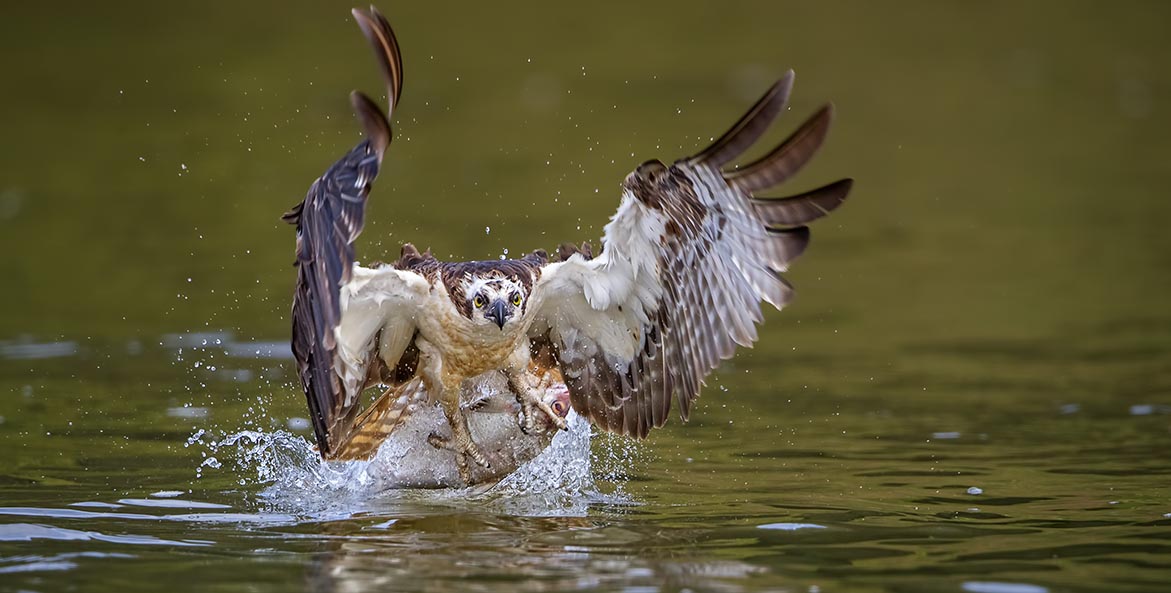Making a Trade
The cost of reducing pollution varies greatly across sources in a watershed. Upgrading infrastructure at a wastewater treatment plant or retrofitting city streets with bioswales to trap runoff, for example, can cost significantly more than fencing livestock out of a stream on a farm. To put the differences in perspective, stormwater systems contribute an estimated 16 percent of the Bay's nitrogen pollution, but the sector accounts for as much as 67 percent of the estimated total Bay cleanup cost.
To meet some of their permit requirements, regulated pollution sources like municipal stormwater systems and wastewater plants may therefore choose to purchase water quality credits from farmers, who can achieve pollution reductions at lower costs, instead of pursuing more expensive projects to directly reduce their own pollution.
When markets are designed and implemented correctly, the pollution reductions sold as credits from a farm will achieve the same benefits for local and regional water quality as the infrastructure projects they replace. In this way, trading allows regulated polluters to meet their legal requirements and defray the costs of compliance—through purchased credits—while still reducing the amount of pollution entering the watershed overall.
Regulations Create Demand for Water Quality Trading
The foundation of any water quality trading market is a legal incentive to reduce pollution. In the United States, the basis for trading primarily stems from two programs under the federal Clean Water Act.
Water Quality Standards and Total Maximum Daily Loads (TMDL)
The Clean Water Act requires states to set water quality standards for their streams, rivers, lakes, and coastal waters to ensure they are safe for recreation, drinking water, or other designated uses. When waterways do not meet the standards, states list them as "impaired" and must develop a TMDL to bring them into compliance. The TMDL sets a cap on the amount of pollution that can flow into the water.
For example, the Chesapeake Bay has a TMDL that sets targets for how much nitrogen, phosphorus, and sediment can flow into the Bay and its rivers and streams without impairing water quality. The Chesapeake Clean Water Blueprint includes the TMDL and the state plans to achieve the pollution reductions necessary to meet it.
A TMDL also divides the pollution cap among the various sources of pollution contributing to the problem, such as farms, municipal stormwater systems, and wastewater treatment plants. Each source is responsible for making its allocated share of pollution reductions to meet the collective water quality goal for the waterway.
The National Pollutant Discharge Elimination System (NPDES) Permit Program
Wastewater treatment plants, factories, and other "point sources" that release pollution from a single, identifiable place are required to have NPDES permits that limit the amount of nutrients and other pollutants they can legally discharge into waterways. NPDES permits also apply to certain municipal separate stormwater systems (MS4s), which collect and carry polluted runoff from city streets and developed areas into nearby waterways, as well as concentrated animal feeding operations (CAFOs) that raise large numbers of livestock in a small area.
In watersheds with TMDLs, states or local governments can incorporate the required pollution reductions into the permits issued under the NPDES program, making them legally enforceable.
In essence, these regulatory drivers create a demand for pollution reductions among permitted entities, such as municipal stormwater systems and wastewater treatment plants, that face legal and financial consequences for failing to meet water quality goals.
Where Do Trading Credits Come From?
Under a TMDL, each source of pollution—a farm, a city stormwater system, a wastewater treatment plant—is responsible for making its share of the overall pollution reduction required to meet water quality standards. Some sources, however, can cut pollution even further and achieve more than their required reductions. In that case, the extra pollution reductions can be turned into "credits" available for trading.
Example:
A farm is responsible for reducing five pounds of nitrogen pollution running off an acre of its land into a nearby stream. The farmer plants a forested buffer along the stream and converts the neighboring corn field into a grass pasture, which reduces the amount of nitrogen flowing into the water by eight pounds. The extra three pounds of pollution the farm cut is then available to sell as credits in a water quality trading market.
CBF's Position
CBF supports nutrient trading with certain caveats:
Blueprint First: Trading programs must ensure that the pollution reductions being made exceed the requirements of the Chesapeake Clean Water Blueprint.
Local Water Quality Protection: Trading programs should prohibit trades that allow the degradation of local water quality. Trades should not concentrate pollution reductions in one area of a watershed while allowing pollution elsewhere to continue unabated .
Accountability and Accessibility: Trading programs must ensure that the public is fully informed when credits are created and when a facility is using credits. Interested stakeholders must have full access to the information and have opportunity to provide input and challenge the use of credits, if necessary. In addition, independent third parties should verify and monitor pollution reduction practices used to generate credits.
Verified Technology: Trading programs must ensure that the credit-generation practices have been assigned a science-based "pollution reduction efficiency" approved by the scientists at the Chesapeake Bay Program.
Timeliness: Trading programs should not allow the use of credits before they are generated. In other words, the pollution reduction practices that create credits must actually be implemented before credits can be used.
More Information from the Environmental Protection Agency:
- Overview of Identifying and Restoring Impaired Waters under Section 303(d) of the CWA
- What triggers the need for a TMDL?
- Stormwater Discharges from Municipal Sources



